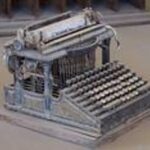Professional resume writers agree that there are many correct ways to write a resume. In fact, get 10 writers working for the same client and they could feasibly come up with 10 different resumes; all of which could be very good.
Regardless of the resume format and choice of words, resume writers are driven to help candidates develop powerful, professional resumes that will result in job interviews. The goal is to help create strong resumes that will help job seekers promote their own unique personal brand.
Thes 50 resume writing tips can help proofread a resume, regardless of who does the resume writing.
- Proofread resumes for grammar, spelling and factual errors
- Use consistent font size – watch bullet sizes
- Limit or avoid graphics completely when writing a resume
- Use upper case letters sparingly and only when appropriate
- Fancy, expensive resume writing paper is not always a priority
- Using bullets will make resumes easier to read
- Do not use “responsibilities”, “responsibilities include” and “duties include”
- Volunteer work and community service can really enhance a resume
- Adjust margins if the resume is slightly too long
- Avoid personal pronouns like “I”, “my” and “me” except in the objective statement
- Do not list complete addresses of past employers
- Do not include names of references on the resume. Add a separate job references document.
- The top 30-40% of the resume gets the most attention
- Use an ASCII font
- Use page numbers if the resume is more than one page
- Add name, phone and email contact to all pages if more than one page
- Try a resume blaster service
- Print out an online profile is not the same as having a resume
- Use tables to align columns and remove lines
- Use a professional email address on your resume
- Hyperlink your email address
- Do not place information above the jobseeker’s name
- Set resume margins no smaller than .5
- New college graduates should put education close to top of resume
- With years of experience, move education to the bottom of the resume
- A resume has about 30 seconds to make an impression on the recruiter
- Change the resume objective statement as needed
- Write a strong “Summary of Qualifications”
- Use industry “buzz words” or keywords on a resume
- Resumes must identify specific successful outcomes
- Use $, % and # to demonstrate achievements
- One specific phrase to try and avoid – Entry Level
- Do not use one word resume objectives eg “Sales”
- Research advantages of the Chronological resume vs Functional resume
- Be consistent with date formats on the resume eg 09/02, Sep 02, Sep 2002
- Consider the Combination resume
- Get others to proof read your resume – be open to criticism
- It is not necessary to include every job you have ever had
- Keep all resume content relevant
- Not all online resume writing services are equally capable
- Always keep a resume writing guide on your desk for quick reference
- Resumes, cover letters and thank-you letters can have the same letter head format
- Try to bring quality resume paper for interviews
- Lying on a resume is not smart or necessary
- Do not include social security numbers; some federal resumes may require it
- Use Action Verbs on the resume to describe accomplishments
- Use short paragraphs. 3-5 sentences maximum
- White space on a resume is not a bad thing
- Make sure your resume contact information is current.
- Consider working with a professional resume writer for a resume critique
Job seekers should keep in mind that the resume is only one piece of a successful job search strategy. Networking and powerful interview skills are also important in moving closer to a desired career.


